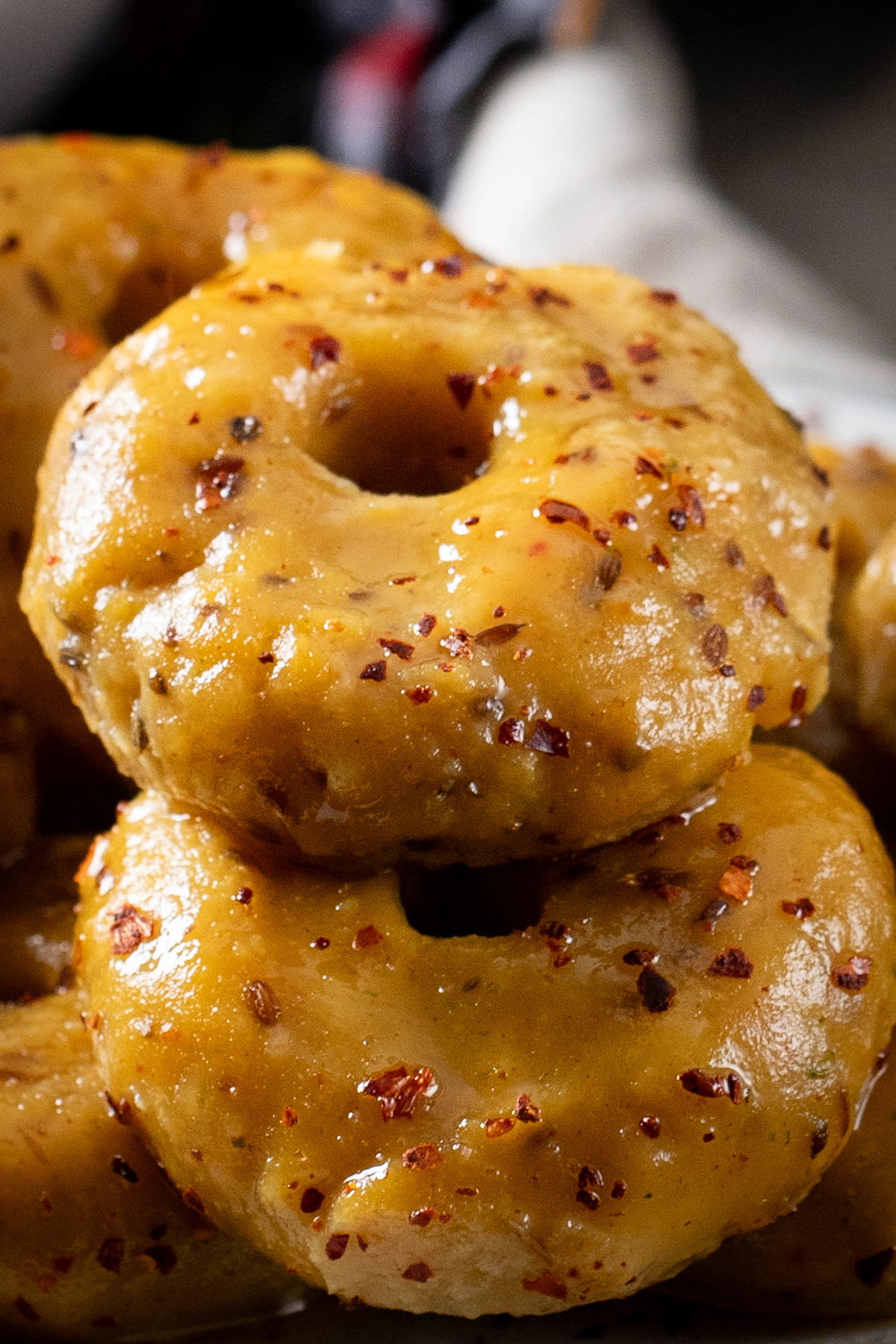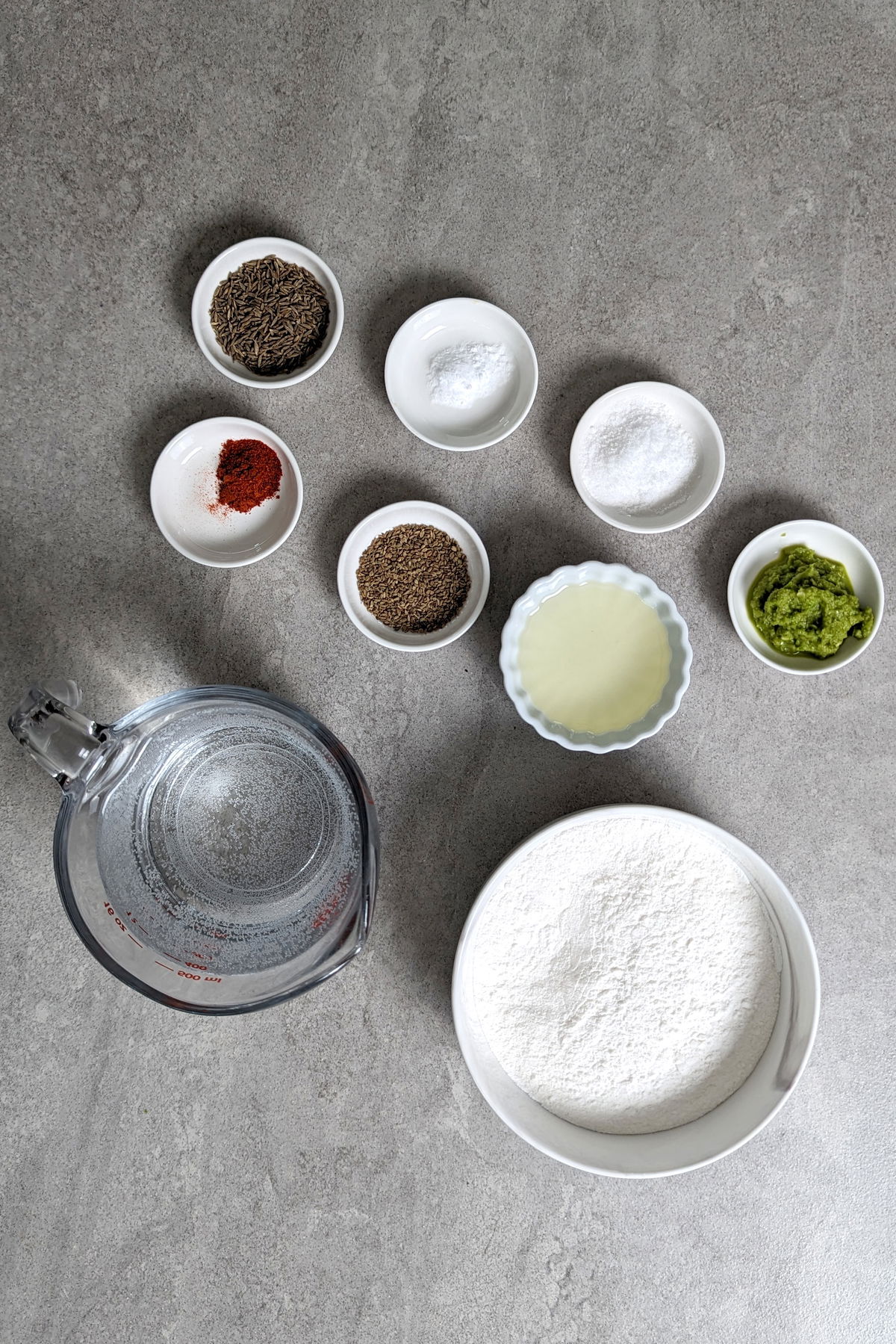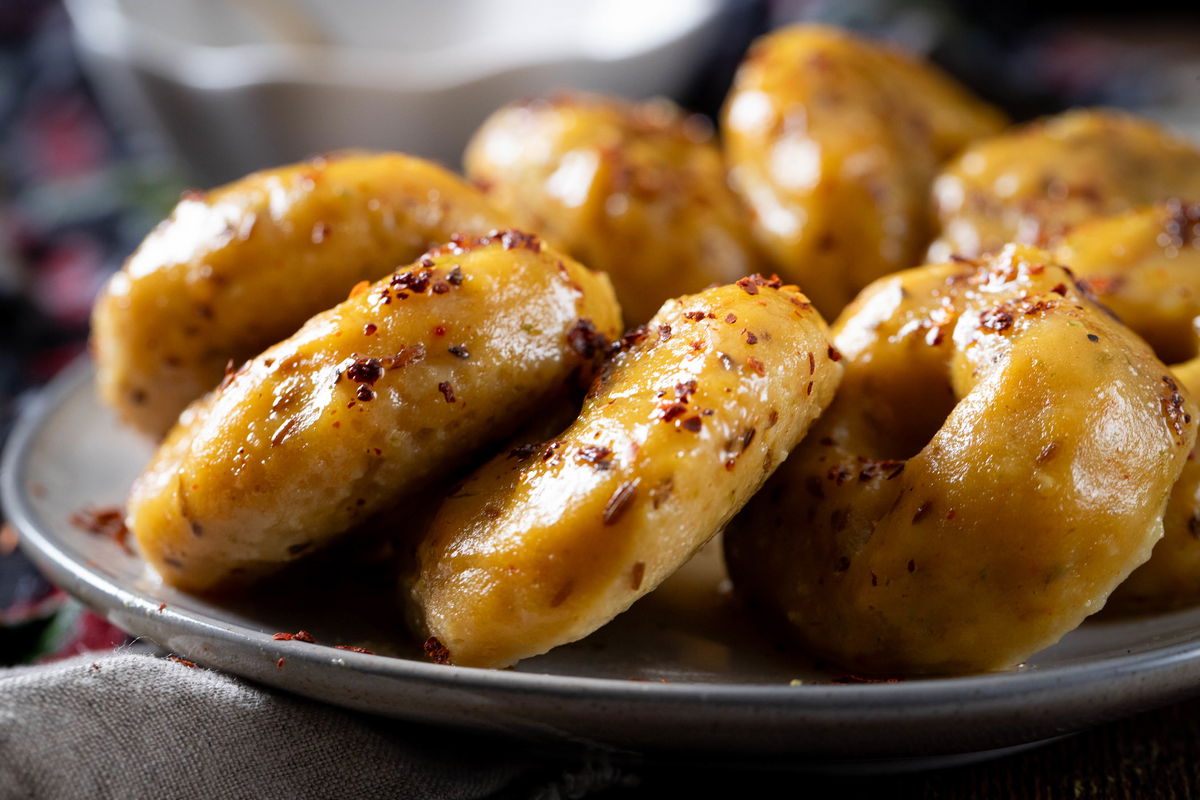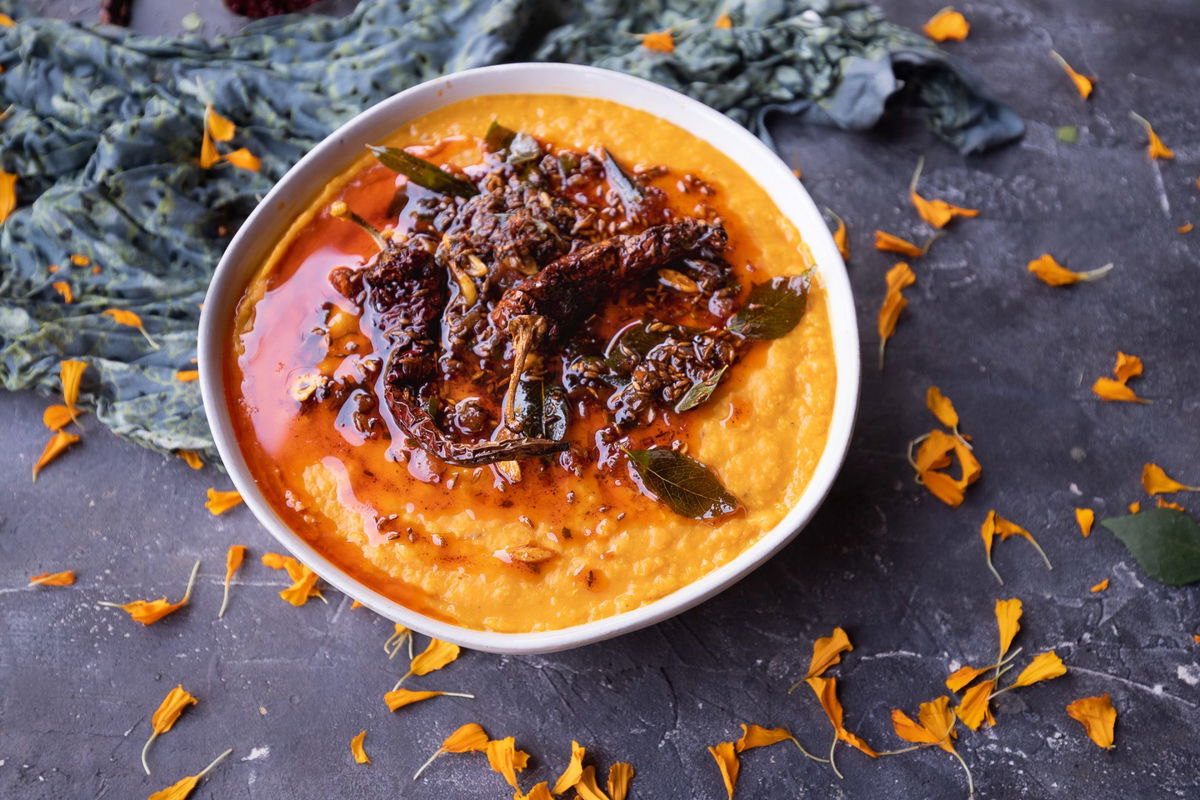Papdi no lot is a beloved Gujarati treat. Traditional recipes often call for an ingredient that raises eyebrows: papad kharo, which contains the controversial ingredient, sodium benzoate. I have made a fantastic papdi no lot recipe that not only eliminates this concern but also simplifies the process.
About this Recipe

Papdi is a traditional Gujarati snack closely related to papad, but it’s made exclusively with rice flour. You might hear it called by different names like kichya papad, but anything crunchy in Gujarat is often referred to as papdi.
Papdi no lot means the dough for papdi. It is a favorite snack for many Gujarati’s, made by following the same steps for making papdi. However, the process is stopped short. Instead of rolling out the dough, drying it, and heating it over a flame, the papdi no lot is consumed as a flavorful dough. The dough is chewy, soft, and bursting with flavor from the green chilies, cumin seeds, and carom seeds. The texture is reminiscent of mochi, as this is also made from steamed rice flour.
Papdi no lot is also called khichu or khichya, depending on what part of Gujarat you are from.
Ingredients

Rice flour
Cumin seeds
Carom seeds (ajmo)
Salt
Green chilies
Baking soda (to replace papad kharo)
Kashmiri chili powder (optional but recommended)
Ditching the Toxic Element
My family’s traditional recipe calls for papad kharo, which contains sodium benzoate, which some people have concerns about. To keep my papdi no lot safe and delicious, I’ve substituted baking soda (sodium bicarbonate) in equal amounts, retaining the flavor and texture.
When I set about trying to replicate my aunt’s verbal recipe consistently, I knew I wanted to replace the papad kharo. I tested different quantities of both baking powder and baking soda. Turns out baking soda is far superior in this recipe and that you just need a little bit.

Cooking Tips
Proportions Matter
One of the challenges in making papdi no lot is getting the proportions right. Too little chili makes it bland, too much water makes it soggy, and too little, and it’s dry. After many trials and tweaks, I have the measurements that work for me. However, flour can be finicky, and depending on your source of rice flour and the weather, you may have to adjust your recipe. So pay close attention to texture as you cook your lot.

Steam Time Magic
While many recommend different steaming times, I found that 20 minutes was just right. This gives you a soft and chewy rice flour snack with the perfect texture.
Serving Papdi no Lot
Toppings
The toppings you add to your papdi no lot is a matter of regional Gujarati traditions and personal preference. No matter what the preference though, it is always served with oil. Classic choices like peanut or neutral oils like avocado oil work wonderfully.
In my family, it is simply enjoyed with a bit of oil. I also like to add a sprinkle of red chili powder and sanchar (Indian black salt/kala namakh) to my oil.
I’ve had it served with even red chili and garlic added to the oil for an extra punch of flavor.
Many parts of Gujarat also serve papdi no lot with pickle masala (athana no masalo/ achaar masala).
Variety in Shaping
You can get creative with shaping your papdi no lot. Try steaming it whole, in logs that you can later cut into discs, or form it into donut-shaped rings. If you’re feeling adventurous, try forming it into balls for a unique twist.
Baking Alternative
If you want to explore a non-traditional route, consider baking your papdi no lot in the oven at 425°F for 45 minutes. This will give it a crispy crust while keeping the center soft—a delightful variation to savor.
Add Some Flair
Enhance your papdi no lot by adding hing (1/8 tsp), chopped cilantro (up to 1/4 cup), or coarsely cracked black pepper (up to 1/2 tsp) to the boiling water when forming the dough. These additions bring extra flavor to your snack.

Storing Your Papdi
Refrigeration
Papdi no lot can be refrigerated for up to four days. When reheating, steam it for 6-8 minutes or sprinkle with a splash of water and pop a few pieces in the microwave for about a minute.
Freezing
To extend its shelf life, you can freeze your papdi no lot. Steaming it from frozen takes just 15 minutes. It’s a great way to enjoy this delightful snack over an extended period.
With this papdi no lot recipe, you can savor the flavors of Gujarat without worrying about harmful ingredients. Whether you choose to steam or bake, add spices or keep it simple, this snack is bound to become a favorite in your household. So, roll up your sleeves, gather your ingredients, and let’s make some delicious papdi no lot.
Papdi no Lot without Papad Kharo (Sodium Benzoate)
Chewy and flavorful Papdi no Lot, a beloved Gujarati snack, made with rice flour, spices, and a hint of chili, steamed to perfection. Enjoy this authentic and delicious treat.

Ingredients
- 1 cup rice flour
- 2 cups water
- 2 Serrano chilies or 2 tsp Serrano chili paste
- 1 1/2 tsp cumin seeds
- 1/2 tsp carom seeds
- 1 1/4 tsp salt (or to taste)
- 1/4 tsp Kashmiri chili powder or paprika
- 1/4 tsp baking soda
- 2 tbsp neutral oil of choice
Optional Oil Topping:
- 2 tbsp neutral oil of choice
- 1/4 tsp Indian black salt (sanchar or kala namakh)
- 1/4 tsp chili flakes (or substitute chili powder)
Instructions
- Process the Serrano chilies into a coarse paste using a mortar and pestle or a small blender.
- In a wide-bottomed pot, combine the water, chili paste, cumin seeds, carom seeds, and salt. Bring the water to a rolling boil over high heat.
- Once the water is boiling, add the chili powder and baking soda. Stir to evenly distribute the baking soda.
- Turn the heat down to low. Add the rice flour. Using a sturdy silicone spatula, combine the rice flour and water mixture. Once the mixture is well combined, use the silicone spatula to mash the mixture for 1 to 2 minutes until the texture is smooth and separates easily from the pan.
- Transfer the mixture to a bowl. Cover tightly and let it rest for 30 to 60 minutes.
- Set water to boil in a steamer and grease the steamer insert well with oil.
- Meanwhile, shape the papdi no lot donuts. Grease your palms with oil and scoop two tablespoons of dough to form into a ball. Flatten it into a disc and use a chopstick or your fingertip to form a hole in the middle. Use plenty of oil for each one to prevent the dough from sticking to your hands.
- Arrange the papdi no lot donuts onto the oiled steaming tray, leaving a bit of space in between.
- Steam under medium heat for 20 minutes. Remove from the steamer and let them cool for 20 minutes on the steamer tray. They will be delicate so do not move them immediately.
- To make the optional oil topping, stir the black salt and Kashmiri chili powder into a small bowl of oil. Drizzle over the top of the papdi no lot, or serve as a dip.
